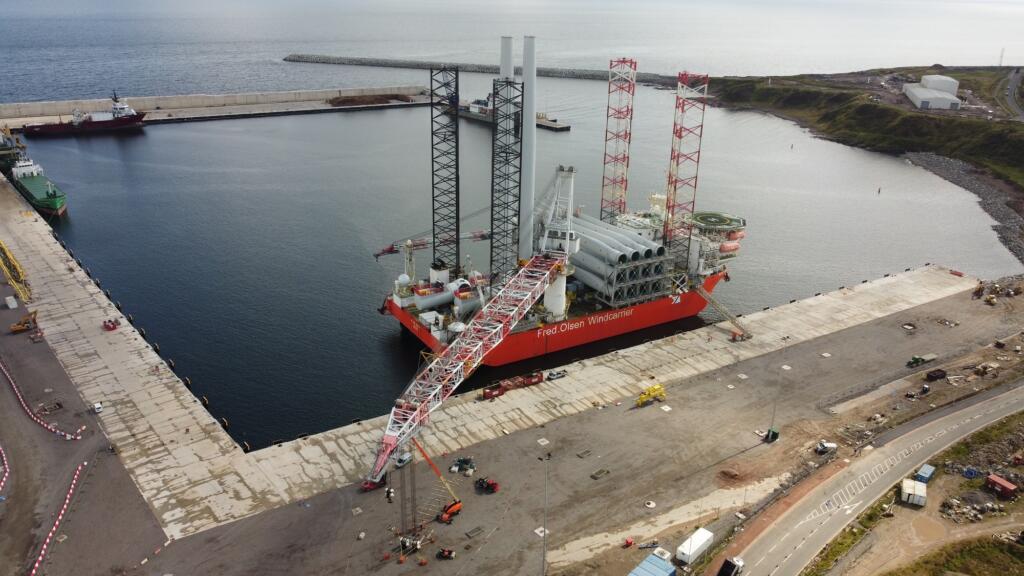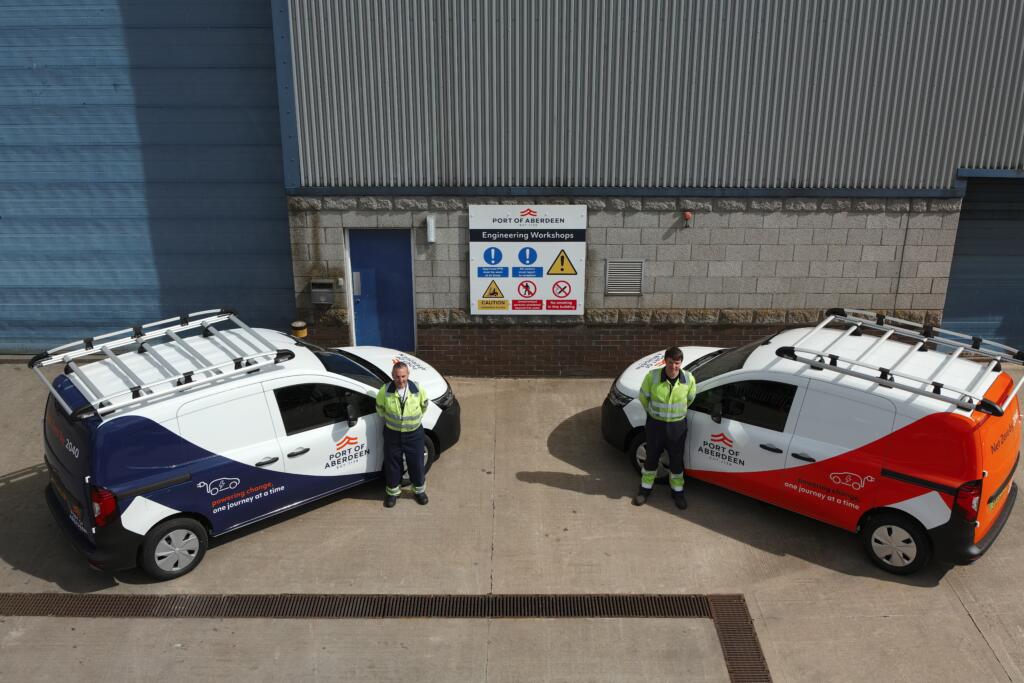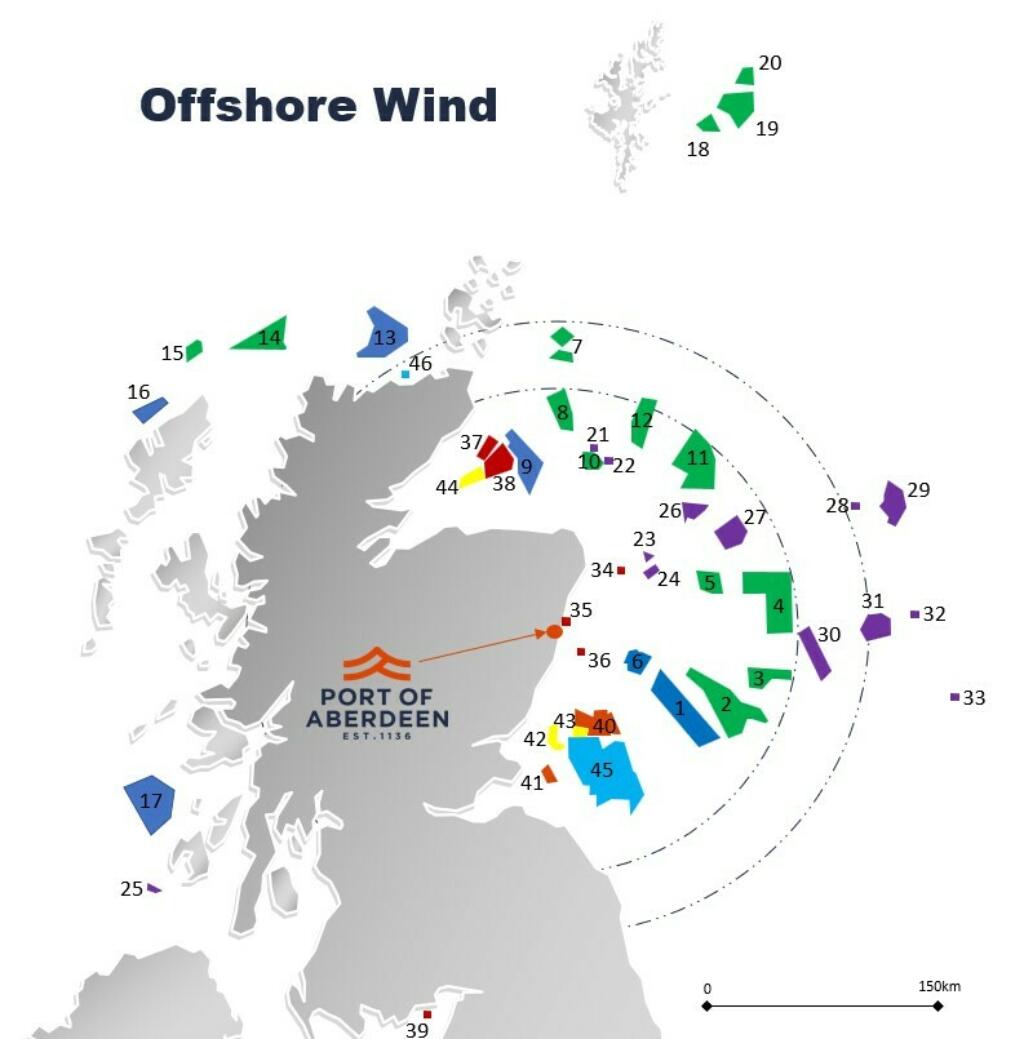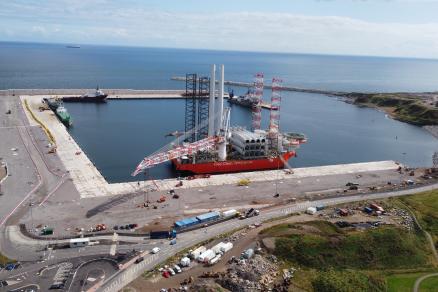
Navigating maritime decarbonisation in Aberdeen

Port of Aberdeen's Environmental Manager, Belle Sierina, discusses why the port is undertaking a multitude of decarbonisation projects to reach net zero.
Reducing emissions from ports and shipping is key to achieving net zero targets, however, it’s a significant challenge with no single solution.
Shore power and future low or zero carbon fuels will require significant investment, in often aging port infrastructure. Who decides what’s needed and who foots the bill? Ports? Vessels owners? Industry? Government?
The reality is that close public and private sector partnership, investment, and alignment is required to deliver this transformational change.
Zeroing in on future sustainability
Port of Aberdeen launched its net zero strategy in April 2023 with the bold ambition to become the UK’s first net zero port by 2040, backed by up to £55 million of investment over the next ten years.
The strategy has three work streams – reducing emissions, facilitating future fuels, and supporting the energy transition – which guide the port’s projects, investment, and decision making. Aberdeen is currently unique in the context of UK ports, measuring and taking accountability of scope 1, 2 and 3 emissions.
To track its progress towards net zero, Port of Aberdeen is measuring it emissions against a 2019 baseline, with an estimated 44,000 tonnes of CO2 equivalent emitted. Notably, 97% of emissions were attributed to 9,500 vessel arrivals, recorded as scope 3 emissions.
The port recently expanded with its new £420 million South Harbour officially opened in September 2023 to support new operations in energy, trade and tourism. Built to accommodate longer, deeper, and wider vessels, a new emissions baseline will be established once South Harbour has been fully operational for 12 months.
Powering the port for a greener future
Shore power is considered the leading solution to reduce vessel emissions at berth, showcasing high technological readiness while ensuring adaptability for hybrid or fully electric vessels in the future.
In March 2022, the port published the results of its Department for Transport-funded Clean Maritime Demonstration Competition (CMDC) shore power study which found that that 78% of emissions were derived from ships using marine fuels while at berth.
Building upon the insights gained from the feasibility study, the port was awarded multi-million pound funding from DfT’s Zero Emissions, Vessels & Infrastructure (ZEVI) competition to design and develop Scotland’s large scale landside and vessel side shore power system.

The project partnership between Port of Aberdeen and Connected Places Catapult, DOF Subsea, Tidewater Marine UK Ltd, OSM Thome, The University of Manchester’s Tyndall Centre, is supported by major energy operators which are based in Aberdeen. Scheduled for completion by March 2025, it will introduce shore power facilities at seven berths in the port’s North Harbour, reducing emissions from vessels utilising shore power provisions by over 80% at berth compared to traditional marine fuel.
Another significant emissions reduction project will see the installation of shore power facilities at Port of Aberdeen for Serco NorthLink’s passenger ferries. This initiative, funded by Caledonian Maritime Assets Limited (CMAL) through a substantial seven-figure sum investment, will mitigate more than 1,300 tonnes of CO2 equivalent per year.
These two projects alone will deliver a tangible reduction in emissions in the coming years and pave the way for the wider roll out of shore power across the port.
The high costs associated with implementing shore power at ports underscores the importance of collaborative efforts and financial support from both public and private sectors. These partnerships are essential for realising this initiative and amplifying emissions reduction efforts.
Future fuels
The integration of low and zero carbon fuels is critical in the journey toward decarbonising ports and shipping.
Port of Aberdeen has already taken sustained action to decarbonise the port by switching all company vehicles and port vessels to fully electric or running on Hydrotreated Vegetable Oil (HVO), reducing emissions from fuel use by 73%. The port has also delivered an expansion of electric vehicle (EV) charging infrastructure in both North and South Harbours to reduce the demand for fuel usage and scope 1 emissions.
Additionally, the installation of service trenches along the entire 1.5km of quayside at South Harbour will streamline the installation of infrastructure for fuels and utilities. This will include power lines and data cables, supporting the expansion of the port’s EV charging infrastructure, shore power, and the low and zero carbon fuels of the future.

Decarbonisation through collaboration
As the only UK port participating in three out of ten ZEVI projects, Port of Aberdeen is at the forefront of collaborative efforts with both the public and private sectors.
Port of Aberdeen is supporting the Bibby Marine led consortium to build the world’s first zero emission electric Service Operation Vessel (eSOV). This vessel, equipped with a robust battery system and dual fuel methanol engines, underscores UK leadership in technology and design while significantly reducing emissions and costs. Additionally, the port is supporting Ocean Infinity’s project which will see conversion of an existing high horsepower marine engine to dual fuel methanol power.
In 2023, Port of Aberdeen secured government funding for a groundbreaking project involving the world’s inaugural liquid hydrogen autonomous vessel. The £5.4m project is expected to be delivered later in 2024 as part of a CMDC consortium led by zero emission vessel provider ACUA Ocean, in partnership with zero emission infrastructure provider Unitrove. The initiative aims to trial a domestic green shipping corridor between Aberdeen and the Northern Isles, with hydrogen powered autonomous ships being used to transport cargo.
Aberdeen’s ‘Port Zero’ CMDC feasibility study, developed in partnership with Energy Systems Catapult, Connected Places Catapult and Buro Happold, developed a roadmap for decarbonising operations at South Harbour. This strategic plan aligns with the port’s goal of promoting the use of low or zero carbon fuels across both landside and marine operations.
Offshore wind opportunity
According to Scottish Development International, Scotland has a project pipeline of more than 45 gigawatts and a report last year from the Floating Offshore Wind Taskforce found that initially, a minimum of three to five ports in Scotland will need to be transformed into new industrial hubs to ensure they are ready for the mass deployment of floating wind by the end of this decade.
It’s clear that harnessing the potential of offshore wind is complex, and it demands public and private sector investment and collaboration to avoid ports turning from a strategic enabler to a project bottleneck.
While much of Scotland’s existing port infrastructure is robust, it requires substantial upgrades to accommodate the scale and complexity of offshore wind operations.
With more than 160 floating wind turbine designs currently on the market, ports face the unenviable challenge of planning infrastructure investments to enhance their capacity and capability without clarity on what future projects will require in terms of quayside length, depth and laydown area.

Regulatory and planning must also be considered. Streamlined planning processes are essential to leverage the full potential of Scottish ports in the offshore wind sector. Bureaucratic hurdles and delays could dampen investor confidence and deter project developers, turning ports into impediments rather than key enablers.
The UK Government’s Floating Offshore Wind Manufacturing Investment Scheme, with its £160 million funding allocation, and the Scottish Government’s Strategic Investment Model (SIM), which facilitates collaboration between ports, developers, and government, are steps in the right direction. While three SIM projects have advanced, a further 30 are still under consideration, highlighting the huge demand.
In Aberdeen, our recent £420 million investment in the Aberdeen South Harbour expansion project underscores our commitment to this sector. An additional £25 million dredging project is poised to make us fully ready for floating offshore wind and it’s a tangible example of where industry and government cooperation is needed to support the North East’s Just Transition and the nation’s offshore wind ambitions.
It’s clear we’re in a pivotal moment for Scottish ports. With strategic investments, forward-thinking policies, and collaborative efforts, these ports can become powerful enablers of the next generation of offshore wind, driving Scotland towards a greener, more prosperous future.
However, without urgent action to address the existing challenges, these same ports risk becoming obstacles that stifle progress, resulting in key scopes, and jobs, being relocated overseas.
Navigating towards net zero
As the UK works towards achieving net zero emissions by 2050, ports are at the forefront of this journey, serving as the central point in the nation’s energy transition and shaping the broader landscape of the UK’s energy sector.
Port of Aberdeen’s journey towards a greener future is not merely a destination but a continuous evolution, defined by its landmark net zero strategy which embraces innovation, collaboration, and adaptation.
Despite the challenges of decarbonisation, the port is committed to lead by example, setting new benchmarks for environmental excellence and shaping the future of sustainable port operations in the UK and beyond.




